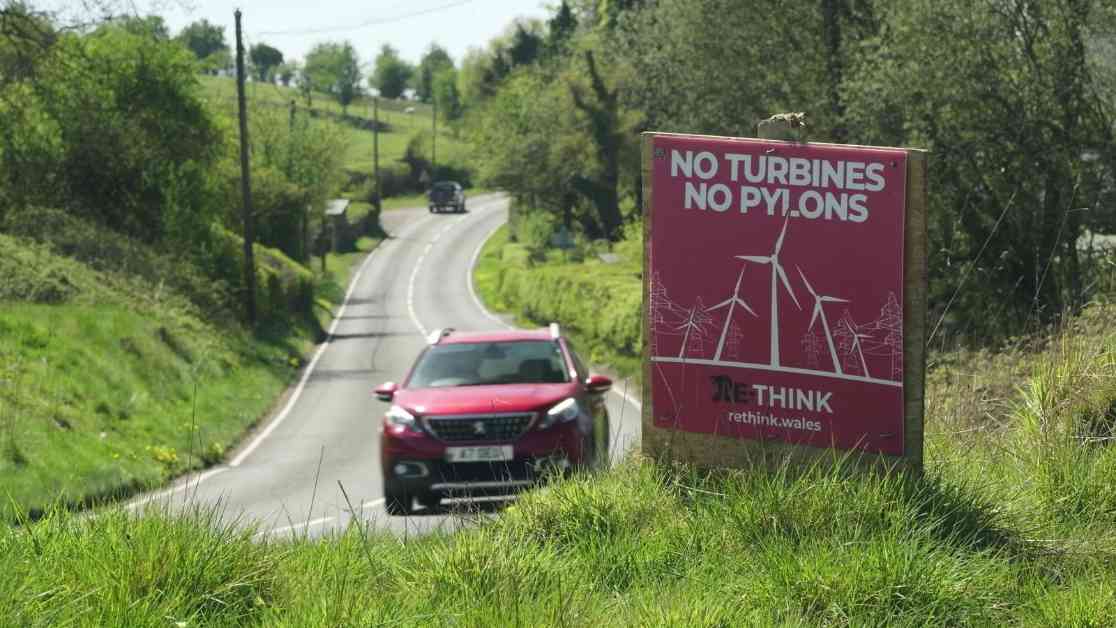It’s not every day you see security guards at the door and a long line of people waiting to get into a local council planning meeting. But in North Devon this week, that was the scene. The community’s passion was on full display as the North Devon Council prepared to vote on a controversial plan to install major electrical cables from a new offshore wind farm to Saunton Sands and beneath the surrounding dunes.
After months of campaigning, site visits, and reports on the ecological and economic impact, the council was ready to make a decision. The proposal faced fierce opposition from locals, with a staggering 1,843 objections lodged against it.
Helen Cooper, the leader of Save Our Sands, expressed the group’s stance, stating, “We’re not really against the wind farm. We are all for renewable energy. Our main concern is that it feels like they just randomly picked a spot on the map and said, ‘Let’s plonk it here on this beautiful sandy beach.'”
Liz Seymour, another campaigner, highlighted the area’s rich biodiversity, calling it a “hotspot” for various wildlife, from lizards to snakes. She emphasized the value of North Devon’s nature, labeling it as world-class.
The proposed project has raised concerns among local businesses, including hotels, holiday rentals, and beach shops, regarding the potential negative impact of construction activities that could last for several years.
On the other side, the developers, White Cross, argued that the project would provide electricity to 135,000 homes and claimed to have adjusted their plans to minimize environmental and social consequences.
The situation in North Devon reflects a broader challenge faced in other parts of the UK – finding a balance between the necessity for clean energy and the repercussions of building the infrastructure to support it.
In Mid Wales, a group of around 300 farmers and landowners have been in a legal battle against plans for 60 miles of electricity pylons to connect new onshore wind farms. The opposition argues that the pylons would have a detrimental impact on the landscape and wildlife.
Dyfan Walters from the Llandovery Pylon Community Action Group expressed his concerns, pointing out the potential consequences of the proposed pylons on the local environment. He advocated for underground installation of the cables, citing the need to preserve the landscape.
Developers, Green GEN Cymru, defended their position, stating that fully undergrounding the routes is not economically feasible. They emphasized their efforts to reduce the visual impact of the project where possible.
Back in North Devon, the council meeting saw hours of intense debate, with both supporters and opponents voicing their opinions. Despite the opposition, the planning for the cable installation was approved, leaving many locals disappointed.
Helen, reflecting on the outcome, expressed a mix of emotions, saying, “It’s a bit comforting that it wasn’t a unanimous decision. The debate was very heated. We will regroup and explore our options. We believe we have solid grounds for a legal challenge.”
The Department for Energy and Net Zero emphasized the importance of improving infrastructure to secure Britain’s clean energy future. They warned of the risks of not investing in the necessary infrastructure, leaving families vulnerable to fluctuating energy prices.
The government’s push for green infrastructure, whether it’s pylons, solar panels, or wind farms, is causing division and conflict in local communities across the UK.
As the debate rages on, one thing remains clear – the push for renewable energy is not without its challenges and controversies. Balancing the need for sustainable energy sources with the preservation of the environment is a delicate dance that continues to unfold in communities like North Devon and Mid Wales.










